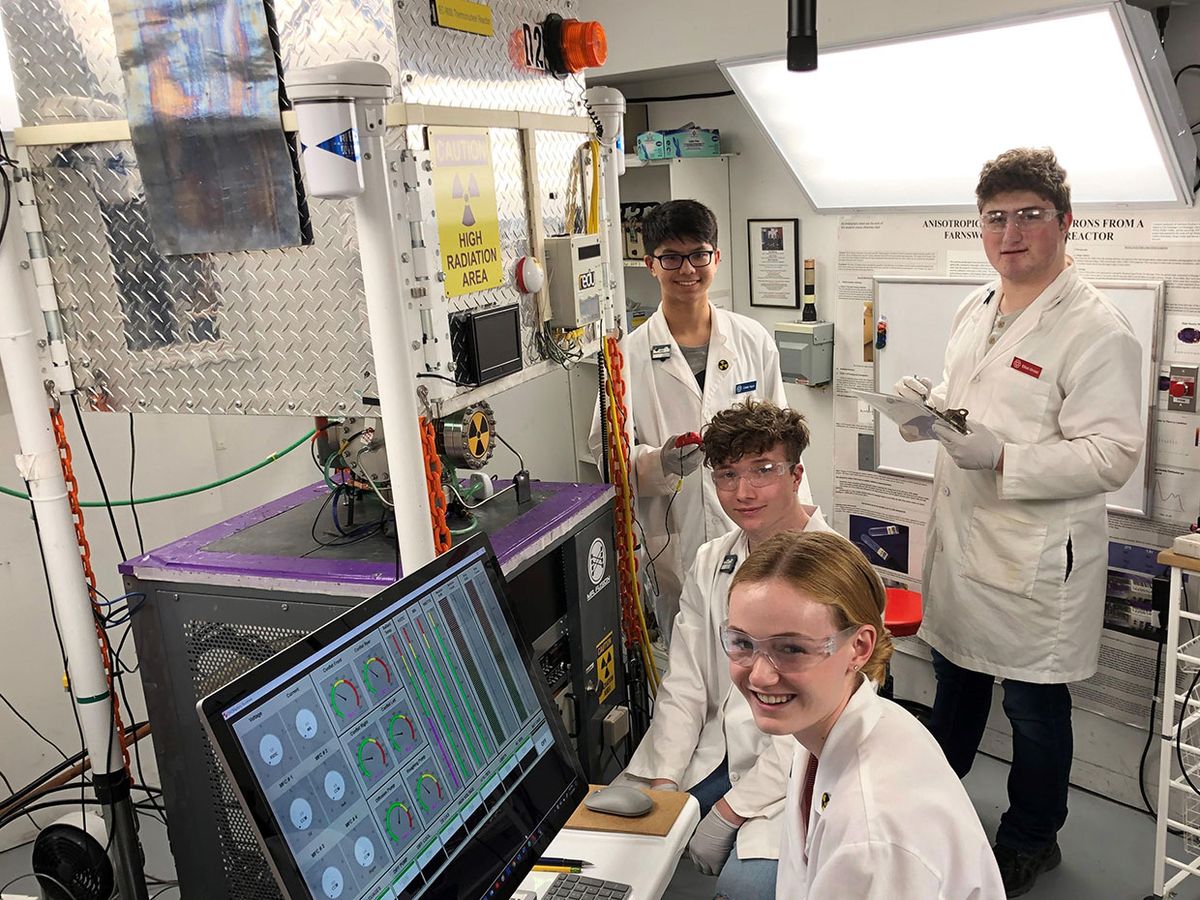In “5 Big Ideas for Making Fusion Power a Reality,” I described how building a fusion reactor capable of producing electricity for the power grid may be engineering’s biggest challenge. But fusing atoms in home-built reactors is well within the reach of many amateur scientists. Indeed, it’s something of a trend. The website fusor.net, for example, lists hundreds of people who are active in this area.
Working in well-shielded basements and garages, most fusioneers are in it for their own edification. Carl Greninger, a data center manager at Microsoft, decided to take his project a step further. In 2010, he built a 60-kilovolt Farnsworth-Hirsch fusion reactor—commonly known as a fusor—in his Seattle-area basement.
A fusor consists of a spherical vacuum chamber surrounding a negatively charged spherical grid. When the reactor is fueled with deuterium and electrified, high-voltage current strips electrons off the deuterium atoms, converting them into positively charged atomic nuclei that fly toward the negatively charged inner cage. With the right combination of fuel, vacuum pressure, and voltage, some of the nuclei will collide violently enough for them to fuse together, releasing high-energy neutrons.
Unlike in a tokamak or a laser-fusion reactor, there is little hope of a fusor ever producing a breakeven reaction, where the energy output exceeds the energy input. Still, it’s a useful machine for running experiments that require neutrons and for learning about high-energy physics.
Shortly after he built his fusor, Greninger began inviting students in the area to come by and use it. To date, about 85 students have accepted his offer. After his workweek at Microsoft is done, he typically spends his Friday evenings with groups of students, who run experiments on the reactor or other high-tech equipment in what he calls the Northwest Nuclear Laboratories.
“Basically, I want to give them the chance to step into the persona of a scientist in a way they can’t at their schools,” says Greninger. “The experience is designed to inspire them, not necessarily to pour in a bunch more knowledge.”
And yet, some of his protégés have done impressive research. Collectively, the students have won more than US $660,000 in scholarships and other awards.
“Having that experience in high school led to a huge number of opportunities,” says Jake Hecla, who with two teammates developed an experiment that won second place in physics and astronomy at the International Science and Engineering Fair in 2013. The project, titled “Investigation of Anisotropic Neutron Radiation from a Farnsworth IEC Fusion Reactor,” revealed that in fusors with a geometry like Greninger’s, more fusion may take place in the walls than in the center well.
After graduating from high school, Hecla got a scholarship to MIT, where as a freshman he was awarded an elite research position based on his extensive experience working with high voltages. He’s now pursuing a Ph.D. in nuclear engineering at the University of California, Berkeley, where his research focuses on next-generation radiation detectors.
“Carl’s basement is where I developed the passion for the kinds of things I’m doing now,” Hecla says. “He gave us tools and direction and opportunities to pursue things we were curious about. For me, that has turned out to be an enormous advantage.”
Tom Clynes, an IEEE Spectrum Contributing Editor, is a writer and photojournalist who covers science and the environment.



